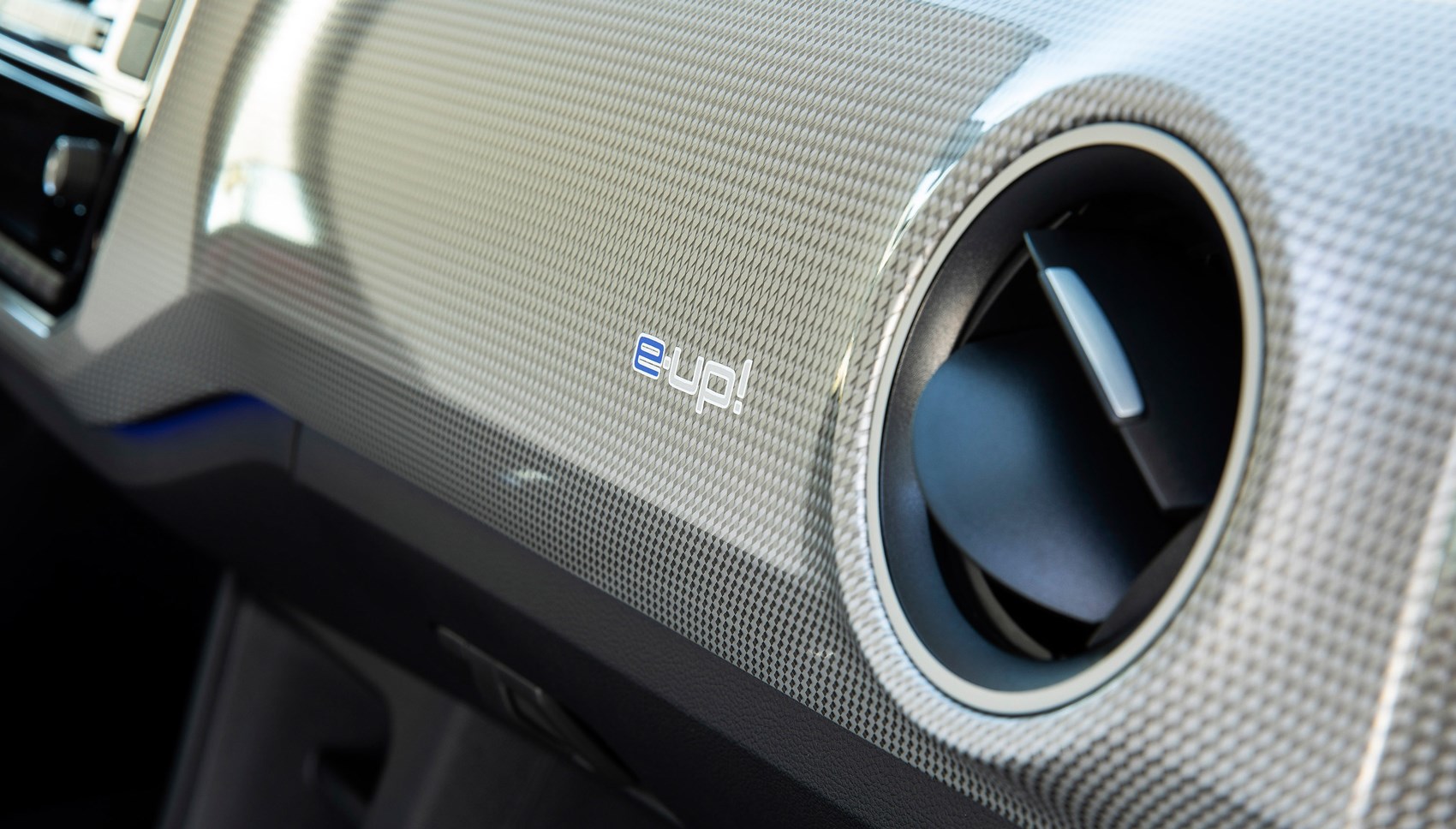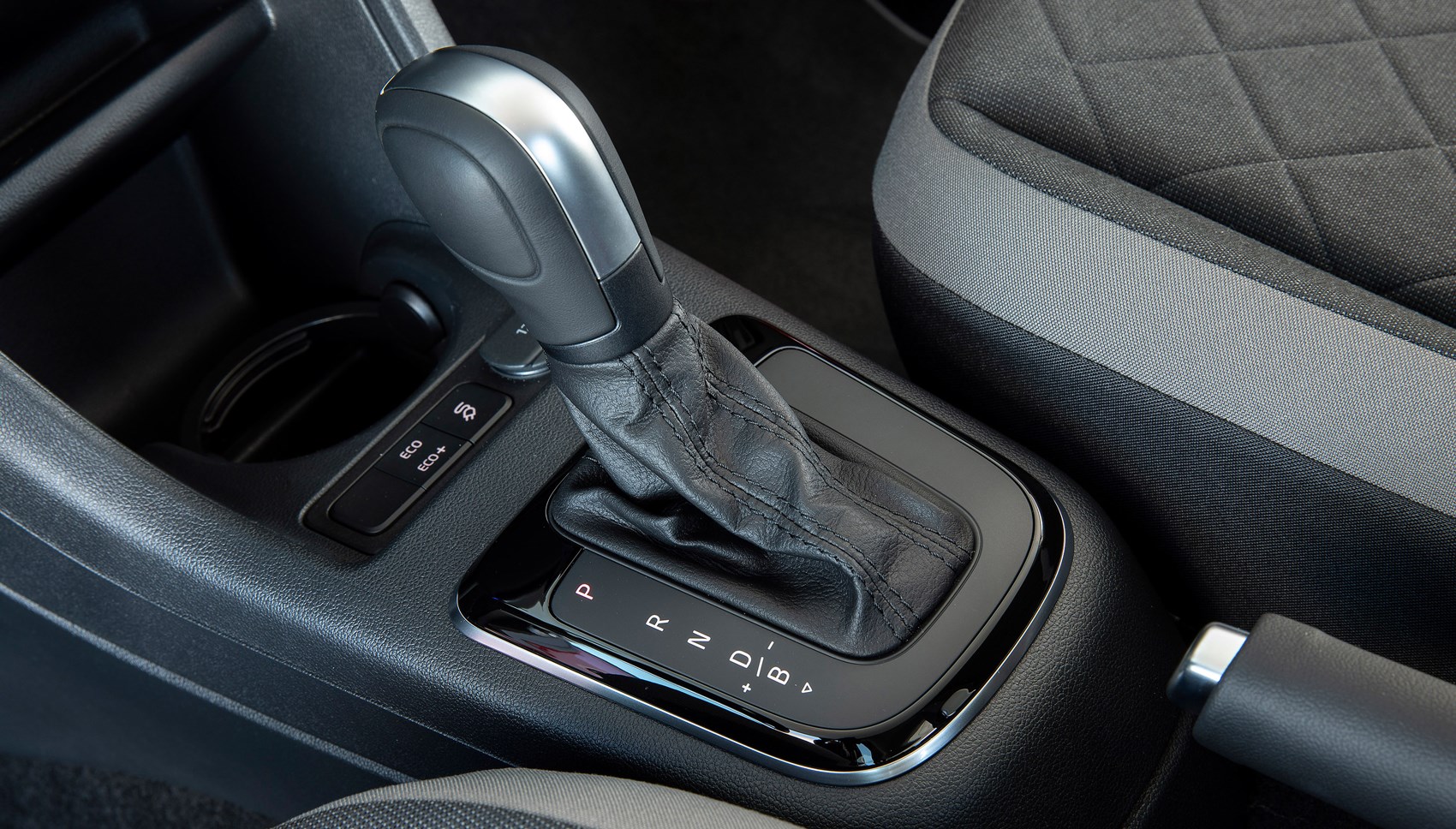► VW’s Up-dated city EV tested
► Battery capacity has almost doubled
► On sale January 2020
More for less. That’s what VW is promising with its refreshed, all-electric e-Up city car. Namely more range from a much higher-capacity battery than before and an expected lower price tag; an estimated £20,000 after the Government’s electric car grant.
Unlike the Seat Mii Electric, which effectively kills off the ICE versions as it arrives, VW has also told us that the petrol Up will remain on sale and the awesome Up GTI will go back on sale (after its hiatus as VW cleared the order backlog) alongside the e-Up.
Read more on VW’s electric plans here
Straight to the point – is anything else new?
Well, VW has confirmed that the UK will get one main spec of e-Up, with the option of a Style pack. Said pack includes a contrast roof and door mirrors, bigger alloy wheels, a cross pattern on the seats and a ‘shark skin’ dashboard fascia. It’ll also usurp the new Golf Mk8 and ID.3 as the first car on sale to wear the new Volkswagen badge, and lane keep assist has been made standard to keep those pesky EuroNCAP testers at bay.

The rest is what we’ve come to expect from the Up since its facelift in 2017, with the e-Up model featuring a cleaner, blanked out face with a pair of sideways U-shaped DRLs.
About that bigger battery…
Yes, the new battery box is shaped the same but its gross capacity rises from 18.7kWH to 36.8kWh, with 32.3kWh being considered usable. That means claimed range also rises from 99 miles to 162 miles.
Best used electric cars: the CAR guide
Power is rated at 82bhp with a punchy 156lb ft, with a 0-62mph sprint done with in 11.9 seconds and a top speed of 81mph.

As for charging, your options remain the same: one hour to get 80 per cent of a charge via a 40kW DC fast charge via the CCS socket, or four hours using a 7.2kW wallbox.
Any eco-trickery you can play with?
Along with a normal operating mode, there are Eco and Eco+ modes activated via a button in front of the gearlever. Eco+ limits the torquey whoosh of acceleration from a standstill, switches off the air-con and limits the speed to 75mph.
Along with that, there are four levels of regenerative braking; levels one to three are accessed by flicking the gearlever to the left or right, with the ‘B’ mode on the gearlever acting as the fourth level. Unlike some EVs, this doesn’t entirely allow for one-pedal driving, but it’s not far off.

As for noise, the only thing the e-Up emits is a gentle synthesised whirr in town, which, to our ears, sounds like the mid-range of a Porsche flat-six. Which is cool.
What’s it like on the road?
It’s certainly nippy around town. The Up’s boxy shape, impressive visibility and 0-30mph sprint power due to the EV powertrain make it adept more than little else at surviving the big city environment. It’s naturally brisk at those low-speed sprints, as all EVs tend to be, allowing you to exploit gaps left by other drivers or zip away from traffic lights.
The steering is well-weighted – something unexpected for a car of this size – and the ride, even on the larger Style alloys is well balanced. It’s not the most precise of things to hurl around if you want some fun, with body roll and understeer blunting any significant dynamism. But this ain’t a car for racin’.

The e-Up is actually quite adept at motorway driving, too. The limited top speed makes it no faster than the motorway speed in some European countries and acceleration, while not quite as potent as it is in the urban environment, will certainly allow you to keep up with the herd. Wind noise was noticeable, particularly blowing over the door mirrors, but tyre noise was impressively kept under wraps, even on coarser road surfaces.
VW e-Up: verdict
The healthy boost in range means the e-Up is more of a feasible runabout for low-mileage drivers looking to make the switch. Its dimensions and electric powertrain make it useful around town and it’s not out of its depth on the motorway, either.
“Twenty thousand pounds” sounds like an awful lot when you say it about a VW Up – bearing in mind that a five-door Up GTI is around £15k, and a new Renault ZOE is around £1,500 more and has a real-world range of around 250 miles.
Check out our VW reviews